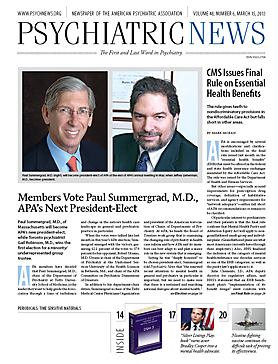Might it be possible to identify children who are likely to engage in antisocial behavior as early as age 2?
It may at first seem unlikely, yet researchers who followed approximately 1,000 toddlers up to age 17 found a strong link between disregard for others’ pain early in life and later development of antisocial behavior.
The study was headed by Soo Hyun Rhee, Ph.D., an associate professor in the Department of Psychology and Neuroscience at the University of Colorado, Boulder. Results were published in the February Journal of Child Psychology and Psychiatry.
This study “is important because it is one of the few studies to longitudinally examine the relationship between early, behavioral indicators of empathic responding…and later antisocial behavior,” James Blair, Ph.D., chair of the Unit of Affective Cognitive Neuroscience at the National Institute of Mental Health, wrote in an accompanying commentary.
Rhee and his colleagues studied almost 1,000 same-gender twins aged from 14 months to 36 months for their study. The researchers observed the twins when someone was in pain and rated the twins on whether they showed anger, hostility, aggression, or amusement at the victim’s plight. As the twins grew older, and up to age 17, they were rated by their parents and teachers and also completed self-ratings of their antisocial behavior. The researchers then assessed whether there was a significant link between disregard for others’ distress in toddlerhood and antisocial behavior at later ages.
Such a link did appear, even when gender and socioeconomic status were taken into account.
“These results suggest that antisocial propensity can be measured very early in life (as early as age 14 months) and that antisocial propensity can be predicted across a wide age range (as late as age 17 years),” Rhee and colleagues said.
They had also observed the twins between the ages of 14 months and 36 months to see whether they had shown signs of empathy—that is, comforting or helping—when someone was in pain. The researchers then evaluated whether empathy was inversely related to later antisocial behavior. To their surprise, it was not.
A possible reason for this, they suggested, is that some of the twins they studied might have displayed a lack of empathy not because they were headed in an antisocial direction, but because they were on the autism spectrum.
Thus, it may be that empathy deficits in children who are headed toward antisocial behavior are charged by “negative affect and aggressive responses to others’ distress,” while the empathy deficits in children on the autism spectrum may be “characterized by a lack of either interest in, or capacity for, empathy and pro-social behavior.”
In short, “our results are consistent with suggestions that empathy deficits may not be always associated with antisocial behavior, that children with low empathy do not necessarily have psychopathology, and that empathy deficits can take different forms in different disorders.”
And since some of the twins were identical and some were fraternal, the researchers assessed whether disregard for others’ pain was stronger in identical than fraternal twins. They found that it was not, leading them to conclude that it was largely due to environmental influences—for example, maltreatment, negative parenting, or neighborhood influences.
And if disregard for others’ pain is largely due to environmental influences, then it might be possible to teach children with such disregard to become more empathic, they suggested. For example, other researchers have found that when parents explain to their children how a person in pain feels, it makes the children more caring in this regard.
The study was funded by the National Institutes of Health, MacArthur Foundation, and Fetzer Foundation. ■
